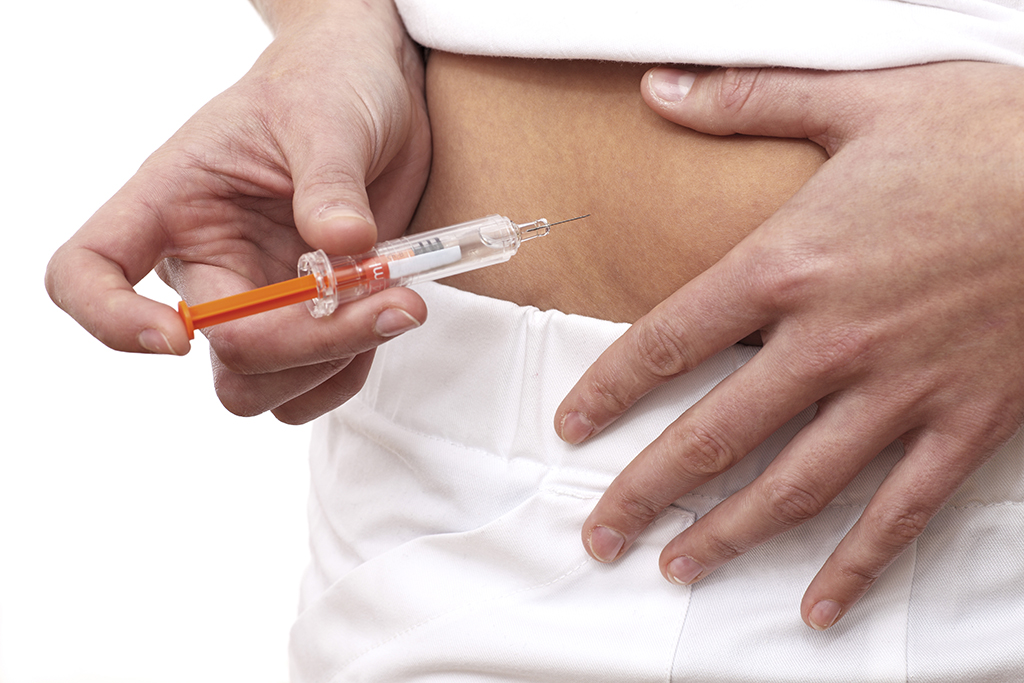
There are currently five heparins registered for use in Australia: dalteparin, danaparoid, enoxaparin, heparin, and nadroparin. Table 1 highlights some of the important differences between these parenteral anticoagulants.
Table 1. A comparison of heparin medications
| Drug | Selected indications | Onset | Usual dosing interval | Monitoring | Antidote |
| Heparin | |||||
| Heparin |
|
IV: immediate SC: variable (20-60 mins) | 8-12 hourly/ continuous IV infusion | Dose adjusted according to aPTT | Protamine (complete reversibility) |
| Low molecular weight heparins | |||||
| Dalteparin |
|
Within 3 hours | Daily | Antifactor Xa may be monitored in patients at high risk of bleeding | Protamine (partial reversibility) |
| Enoxaparin | Daily/twice daily | ||||
| Nadroparin | Daily | ||||
| Heparinoid | |||||
| Danaparoid |
|
Peak activity: 4-5 hours | Twice daily | Dose adjusted according to antifactor Xa level | No antidote |
Abbreviations: VTE, venous thromboembolism; IV, intravenous; aPTT, activated partial thromboplastin time.
Heparin
Heparin, also known as unfractionated heparin, is a naturally occurring mucopolysaccharide. Its anticoagulant effect is achieved by potentiation of antithrombin III which enhances the inactivation of thrombin and factor Xa. However, this effect is thought to be somewhat dose-dependent. Anticoagulation from low-dose heparin therapy appears to occur primarily through neutralisation of factor Xa with a consequent reduction in conversion of prothrombin to thrombin. High-dose heparin therapy achieves anticoagulation from neutralisation of thrombin, thereby inhibiting the conversion of fibrinogen to fibrin. High doses also inhibit the activation of fibrin stabilising factor, further preventing the formation of a stable fibrin clot.
Heparin is one of the oldest medications still in common use today. However, it does have a number of limitations, including:
- Wide variability in anticoagulant response. This is partly due to the heterogeneity of heparin which is a mixture of polysaccharides with varying molecular weights.
- Complex clearance that is significantly affected by dose. Low doses may be removed by a rapid, but quickly saturable mechanism. Subsequent clearance occurs via slower non-saturable pathways that are heavily reliant on renal mechanisms. Therefore, the relationship between dose and steady-state concentration is non-linear during continuous IV infusion;
- Careful monitoring is required when administered by IV infusion (anticoagulant effect and platelet count);
- The relatively short half-life (around 30 minutes following IV injection) necessitates multiple daily doses or administration of a continuous infusion. However, this shorter duration of action may be beneficial in the perioperative setting where the risk of bleeding is high; and
- Risk of heparin-induced thrombocytopenia (HIT). HIT is a life and limb-threatening immune complication of heparin therapy. Occurring in around 2.6% of surgical patients, HIT is often considered heparin’s most clinically significant non-haemorrhagic adverse event.
Low molecular weight heparins
Low molecular weight heparins (LMWH) are a group of chemically distinct compounds produced via depolymerisation of unfractionated heparin. This results in shorter fragments and a lower mean molecular weight. Like heparin, LMWHs also potentiate the action of antithrombin III. However, due to their reduced size, LMWHs have a greater effect on factor Xa than on thrombin.
LMWHs offer many advantages, including:
- Greater bioavailability (around 90% compared to 30-40% for unfractionated heparin);
- Longer half-lives. This enables daily (or twice daily) dosing;
- A more predictable anticoagulant response. This allows fixed-dose administration without the need for routine laboratory monitoring; and
- A lower risk of HIT (0.2% compared to 2.6% for heparin in surgical patients). However, LMWHs are not recommended to be used in patients with a history of HIT as cross-reactivity can occur.
LMWHs are almost exclusively cleared by the renal system. While this offers more predictable clearance independent of dose, accumulation can occur in renal insufficiency. Therefore, dosage reduction and monitoring may be required for patients with renal impairment. Heparin remains the preferred option in patients with severe renal impairment.
Danaparoid
Danaparoid is a low molecular weight heparinoid that is approved for VTE prophylaxis in surgical patients. Like the LMWHs, danaparoid is largely renally cleared and should be avoided in patients with severe renal impairment. Unlike LMWHs, danaparoid has a much lower cross-reactivity in producing thrombocytopenia in patients with a history of HIT. Consequently, danaparoid may be used under specialist direction to treat thromboembolic disease in patients with HIT or a history of HIT.
Conclusion
While these medications share many similarities, they cannot be considered interchangeable. It is also important to remember that anticoagulants are regarded as high-risk medications. Great care should be taken when handling heparins to avoid medication errors. Many of these medications are available in a range of strengths. For example, heparin is formulated as a 50 IU/5mL injection (heparinised saline) that is used to maintain the patency of intravenous injection devices. However, heparin is also available for therapeutic and prophylactic use in various strengths up to 25,000 IU/5mL. Careful attention to strength and dose is required as errors with these products have a high risk of serious patient harm.
References:
- Cardiovascular Expert Group. Therapeutic Guidelines: Cardiovascular. Version 7. Melbourne: Therapeutic Guidelines; 2019.
- Martel N, Lee J, Wells PS. Risk for heparin-induced thrombocytopenia with unfractionated and low-molecular-weight heparin thromboprophylaxis: a meta-analysis. Blood 2005; 106: 2710-5.
- MIMS Australia. MIMS Online. St Leonards: MIMS Australia; 2019.
- Rossi S (ed). Australian Medicines Handbook. Adelaide: AMH; 2018.
- Wilson MR, Tait C. Hemostasis and Anticoagulants. In: Padmanabhan S (ed). Handbook of Pharmacogenomics and Stratified Medicine. London: Academic Press; 2014.
Subscribe Knowledge Centre Updates
Enter your details to receive Knowledge Centre updates
